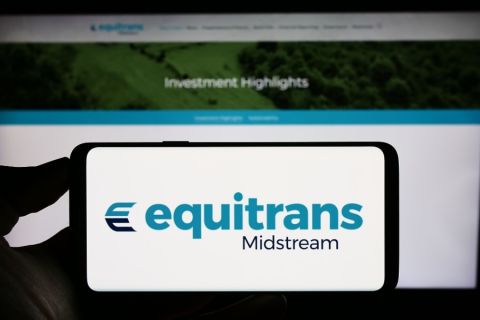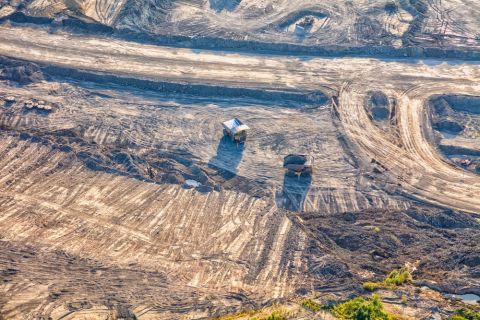Autonomous robotics could be moving from the surface into the wellbore. When they do, they could revolutionize well logging by eliminating surface equipment, enhancing safety and reducing cost and downtime.
Aramco is developing a robot that is both buoyancy- and propeller-driven, which will allow it to operate in both vertical and horizontal segments of wellbores.
The Kinetic Autonomous Sensing in High Fidelity (KASHF) robot is expected to deploy in 2025, Rami Jabari, head of robotics and autonomous systems at Aramco, said during a booth presentation at SPE’s Annual Technical Conference and Exhibition in San Antonio late last year.
Only five untethered and autonomous robots have been developed for downhole applications, and two were developed by Aramco, he said.
“There’s a strong need for downhole robotics,” he said.
Currently, the industry relies on wire line and coil tubing systems to deploy small sensors into the well to record data like pressure and temperature.
“We can eliminate the need for all the surface equipment by utilizing either buoyancy-driven or, in some cases, propeller-driven” robots, Jabari said.
Case for downhole robots
The most obvious benefit of using autonomous downhole robotics is safety, but there are cost and efficiency benefits as well, Jabari said.
And using autonomous downhole robotics simplifies logistics.
“Think about everything on the surface. All that’s gone now,” he said.
Beyond the low capital and operational costs, he said, are other important benefits.
“The key thing is this minimizes human error, and then it reduces the time required for a job. And then, in terms of health and safety risks, obviously those are significantly reduced because you have less people that are required onsite at the time,” he said. “And then the carbon footprint compared to a conventional wire line truck, it’s significantly less because you no longer have a truck waiting around for many hours throughout the course of a couple days.”
And, if data is power, the final benefit is big.
“You can get your data more frequently,” Jabari said.
Jabari said that despite a clear value proposition for autonomous downhole robots (ADRs), there may be some barriers to developing and using them.
“There’s always a risk in putting something in your well, but we’ve taken that risk in the past with wireline tools,” he said.
Sensor Ball
Aramco’s Sensor Ball robot is simple, he said. The buoyancy-driven robot becomes negatively buoyant to drop in vertical wells and positively buoyant to return to the surface, all while capturing data, which eliminates the need for conventional technology like wire line, he said.
Aramco has developed a water well version of the Sensor Ball and has been developing a variation for use in oil wells, Jabari said.
“The key limitation with Sensor Ball is it can only address the vertical. We have wells that go horizontally,” he said.
The KASHF reveal
Marrying propulsion capabilities into a buoyancy-driven robot makes it possible for the robot to operate in horizontal wellbores.
“It’s negatively buoyant in the vertical, and then becomes neutrally buoyant in the horizontal, and then it can use propulsion to move forward,” Jabari said.
Propulsion is superior to tractors, he said, because tractors require power from the surface to move. A neutrally buoyant robot in the wellbore requires very little energy to move, so propulsion is an advantageous method, he said.
In testing at Aramco’s Houston Research Center, the propulsion-driven robot powered by 9V batteries traversed 5 km back and forth in a test track.
Jabari said KASHF is still under development and is expected to be deployed by the end of 2025.
“We still have some capabilities that we’re working on, and mainly that will fall under the vertical descent and some autonomy,” he said.
For starters, the intention is for KASHF to measure pressure and temperature. Later capabilities could include density, flow conditions, flow rates and viscosity.
“Those are kind of the main areas that we’re looking at right now,” Jabari said.
Also on the roadmap for KASHF development is reducing its footprint to about 3 ft long to make deployment easier.
KASHF, Arabic for revealer, “reveals our downhole conditions, and it’s the world’s first propeller-driven autonomous downhole robot,” he said.
Recommended Reading
Equitrans Midstream Announces Quarterly Dividends
2024-04-23 - Equitrans' dividends will be paid on May 15 to all applicable ETRN shareholders of record at the close of business on May 7.
Canadian Natural Resources Boosting Production in Oil Sands
2024-03-04 - Canadian Natural Resources will increase its quarterly dividend following record production volumes in the quarter.
TotalEnergies to Invest $400MM in LPG
2024-05-14 - TotalEnergies is investing more than $400 million into LPG to provide more than 100 million people in Africa and Asia access to clean cooking methods by 2030.
CorEnergy Infrastructure to Reorganize in Pre-packaged Bankruptcy
2024-02-26 - CorEnergy, coming off a January sale of its MoGas and Omega pipeline and gathering systems, filed for bankruptcy protect after reaching an agreement with most of its debtors.
Bobby Tudor on Capital Access and Oil, Gas Participation in the Energy Transition
2024-04-05 - Bobby Tudor, the founder and CEO of Artemis Energy Partners, says while public companies are generating cash, private equity firms in the upstream business are facing more difficulties raising new funds, in this Hart Energy Exclusive interview.






